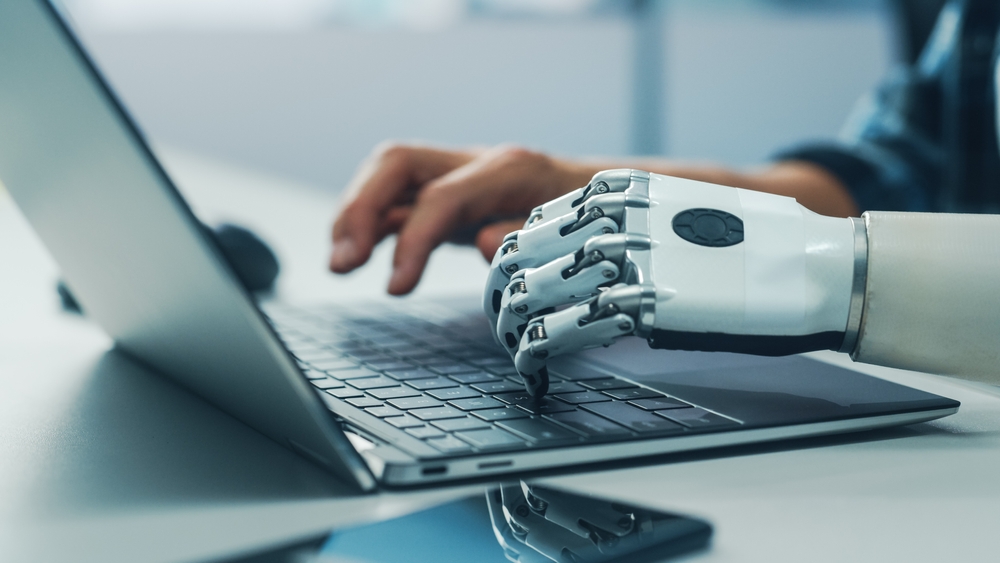
Software and Artificial Intelligence
It is impossible to imagine any area of technology without software. Artificial intelligence (AI) and machine learning (ML) have also made their way into everyday life in recent years. This trend will continue at an increasing pace, making it all the more important to protect your innovations in this field with patents. At EHF you will find patent attorneys who have the specialist know-how required for this field of technology.
Software can’t be patented – or can it?
Even if there is no patent for software as such, German and European patent law does provide applicants with the possibility of protecting software with a patent via so-called computer-implemented inventions. The prerequisite for this is that technical means are used and that they provide a technical contribution to the solution of a problem. Comparable principles are internationally widespread. Therefore, you should always consider patent protection for developments in the software field or for the use of AI or ML. In order to protect your interests properly, the professional preparation of your patent application should be entrusted to a patent attorney specialized in this field.
Our specialists are optimally prepared for this task and have many years of experience with software patents before the German patent office, the EPO and other international patent offices such as the US patent office and the Chinese patent office.

Our areas of expertise
You will find the expertise you need in our multidisciplinary team for the use of software, computer technology, AI and ML in the areas of circuit design, image processing, augmented reality (AR), sensing, robotics, automotive, communication systems and many other fields.
A patent attorney from EHF will assist you in assessing whether your latest software design is eligible for patent protection. Our patent attorney will then draft a valid patent application that corresponds exactly to the criteria set by the patent offices in terms of form, language and content, and will conduct the grant proceedings before the patent offices with full commitment on your behalf.
What is a computer-implemented invention?
A computer-implemented invention (CII) is an invention that involves the use of a computer, computer network, or other programmable apparatus and in which at least one feature is realized wholly or partly by means of software.
Software and artificial intelligence are not separate components in products and processes. In most cases, they interact with existing technologies and serve a specific technical purpose. This technical purpose, which often provides the link between software and existing technology, generally forms the basis for a software patent. The resulting merging of several fields of technology in this area requires extensive expertise. Our specialists not only have in-depth knowledge of software and how to protect computer-implemented inventions with a patent, but also have the necessary technical expertise and scientific understanding of the underlying technologies. With these prerequisites, we can optimize the protection of your innovations.

How can EHF support you?
We specialize in customizing our processes to your needs so you don’t have to modify your internal workflows. With decades of experience with industrial clients, we know the challenges you face when it comes to managing your patent portfolio in a cost-optimized, budget-oriented and efficient way.
Our technological expertise in the field of artificial intelligence and software is based on a sound understanding of the subject-matter and practical experience in hundreds of patent applications worldwide. In addition to a high degree of competence on a national level, we also have extensive international expertise in this area to provide you with optimal support.
Examples of computer-implemented inventions
In electronic circuit design, software can optimize processes ranging from circuit configuration to the physical arrangement of components to masks for wafer production. We have the technical understanding of the relevant processes and can optimally align the content of applications for related software inventions with the requirements of the patent offices.
Software is used in image processing and augmented reality (AR) or virtual reality (VR) applications. The software enables innovative processing of image input data based on classic calculations or with the support of machine learning. For example, efficient methods can be used to create 3D models that can be implemented in virtual or augmented reality.
We know that it is difficult for inventors to put the contents of software into patentable language. This is where we use our expertise to translate the inherent complexity of computer-implemented inventions into a form that is amenable to patent protection.
Furthermore, new solutions are often implemented with the help of software and machine learning in the field of sensor technology and robotics, in the automotive sector and in the field of various communication systems. We provide you with an experienced patent attorney who is familiar with the technical issues involved. Your patent attorney will prepare a CII patent application for you, which will enable the protection of software elements of your innovations in combination with the classic technologies.
Criteria for software patents
Regulations and case law for the patenting of computer-implemented inventions differ throughout the world. However, various principles have evolved that fundamentally allow software to be patented. One well-established requirement is the presence of a technical effect realized by the computer-implemented invention. This is the case, for example, when the result of the software directly causes a further technical effect, such as controlling a machine. Another possibility is that the software affects or changes the operating mode of the computer system on which it runs, thereby improving the operation of the computer system, for example. Further, a computer-implemented invention may be eligible for patenting if the software is adapted to the special characteristics, for example, the internal operation of the computer system used. As this field of technology is also relatively new to the patent offices and the relevant case law is still developing, there are constant changes being made. Continuous training is therefore a matter of course for our patent attorneys and patent engineers to keep up with the latest developments.



